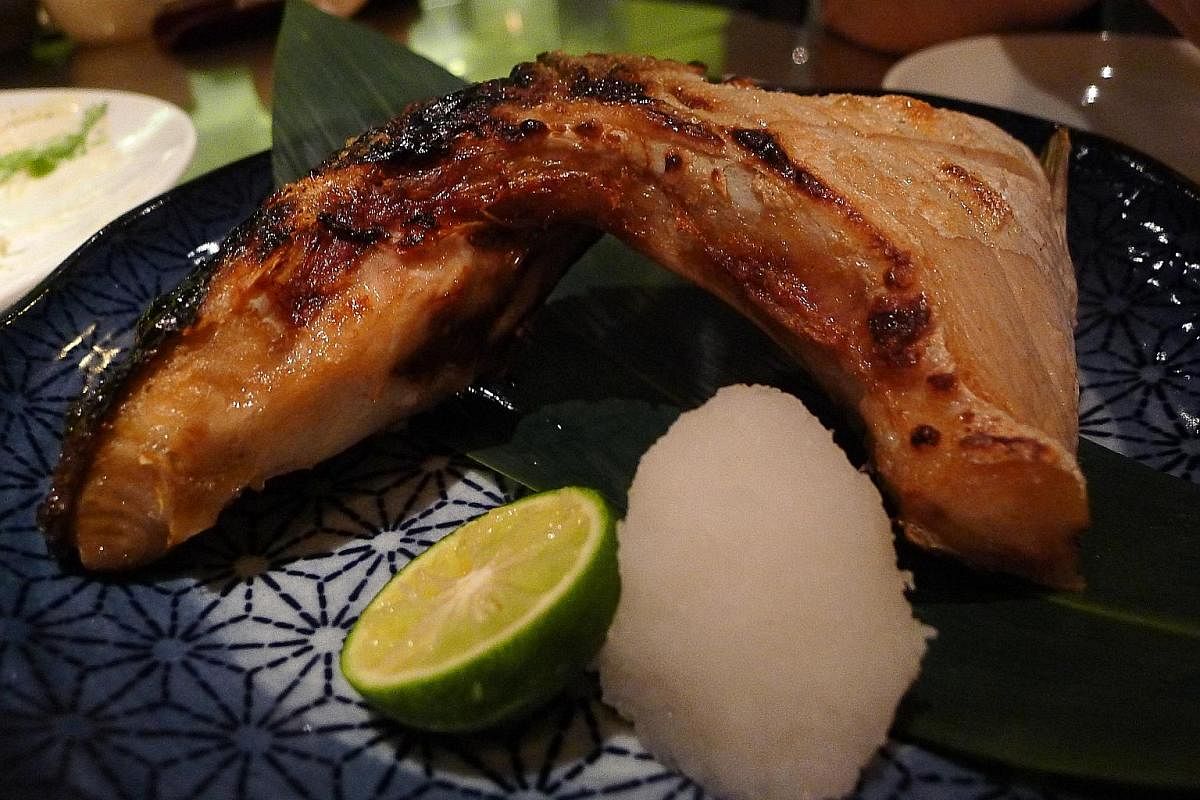-
KYUU BY SHUNSUI
-

29 Keong Saik Road, tel: 6221-7098; open: 6pm to 1am (Tuesdays to Sundays). Closed on Mondays
Food: 3.5/5
Service: 3.5/5
Ambience: 3/5
Price: Budget about $100 a person, without drinks
Restaurant Review
Kyuu by Shunsui - End on a jolly note
At Kyuu, when Hokkaido rice nanatsuboshi is served at the end of an omakase meal, staff chant "yoisho", which is a fun way to round off a dinner


Kyuu by Shunsui, which opened in Keong Saik Road this month, has an unusual concept.
Open only for dinner, the Japanese sashimi and robatayaki restaurant offers just an omakase menu from 6 to 9pm. After 9pm, it is a la carte only until the last order at midnight.
The 10-course omakase menu is priced at $129 a person, which is decent. But if you do not want to spend that much or do not wish to be restricted to the chef's choices, you have no choice but to go for dinner after 9pm.
I have been invited for the omakase experience, but there are dishes on the a la carte menu which caught my eye at the time.
So I go back subsequently, at an hour when on most days I've already finished dinner and am paying the bill.
It is worth the trip because I find dishes not in the omakase menu that I will be happy to go back for. And many of the a la carte dishes come in big portions.
For example, the Salmon Caesar Salad ($12) can be a meal on its own.
A generous amount of lettuce is tossed with housemade cheese dressing and topped with thick slices of raw salmon and a half-boiled egg.
There is so much to eat that my dining companion and I have to put half of it aside or we will not have room for much else.
Next up is the Japanese Omelette Rolled With Bonito Stock ($10) and the chef thoughtfully splits it into two for us.
But each piece is so big that I mistakenly think we are served two orders instead.
It is delicious, with the egg just cooked through.
For the rest of the meal, I focus on the robatayaki items because while the raw fish - which I tried at the omakase dinner - is decent, it is not going to be the restaurant's main draw.
Instead, the highlights are the charcoal grilled items such as the Crispy Grilled Chicken With Yuzu Pepper ($10), a well-marinated piece of boneless chicken thigh sizzled over hot charcoals till the edges of the skin get crisped while the meat stays moist.
Other draws include the Hiroshima Oyster ($11 each) which comes with a housemade ponzu sauce with sudachi lime that you can use as a dip or pour over the oyster.
But the Kumamoto Hamachi Collar ($22) is my favourite. There is plenty of meat, which is sweet and firm.
Squeeze a bit of sudachi lime juice over it and eat it with a bit of grated radish - that is all that is needed because you do not want to overpower the fish.
The most expensive item on the menu, the Kagoshima A4 Wagyu H-bone ($33), may not meet the expectations of diners used to well-marbled Japanese wagyu.
That is because H-bone is a lean cut from the rump, but the lack of fat is compensated by the meat's good flavour.
Oddly though, the menu says it comes with wasabi and salt, but my meat is served with red miso fond de veau sauce. The brown sauce borrowed from French cooking does not quite appeal to me, however. I prefer my grilled meats without sauces and wasabi and salt may be better.
If you want to give your palate a break from meat and seafood, get the Super Sweet Fruit Tomato ($9).
I wouldn't say it's super sweet, but it has a nice balance of tartness and fruitiness. The setouchi salt on the side provides an added flavour profile.
Sadly, something I always enjoy at a robatayaki meal turns out disappointing here.
The Ishikawa Sweet Potato ($14) is not sweet and even the accompanying dip of honey and salted butter cannot disguise its blandness.
Kyuu, which occupies a single shophouse unit, comprises mainly a counter, behind which is the food preparation area.
It is small enough for the chefs to pass the cooked food directly to diners seated at the counter without the use of wooden paddles found in some robatayaki restaurants here.
There are also a few small tables for those who do not wish to sit at the counter.
The omakase menu changes according to the whim of the chef, but it always ends with a serving of Hokkaido rice nanatsuboshi covered with salmon roe.
You get to choose the serving size of the rice - small, normal or large - and the chef then starts scooping the ikura on top.
And he does not stop until you tell him to, never mind that the roe is spilling out of the ceramic bowl.
To add to the fun, the rest of the staff start chanting "yoisho". It's a ritual that gets everyone in a joyous mood - which is always a good way to end dinner.
• Follow Wong Ah Yoke on Twitter @STahyoke and on Instagram @wongahyoke
• The Sunday Times paid for its meals at the eateries reviewed here.
Join ST's Telegram channel and get the latest breaking news delivered to you.
A version of this article appeared in the print edition of The Sunday Times on October 15, 2017, with the headline Kyuu by Shunsui - End on a jolly note. Subscribe


